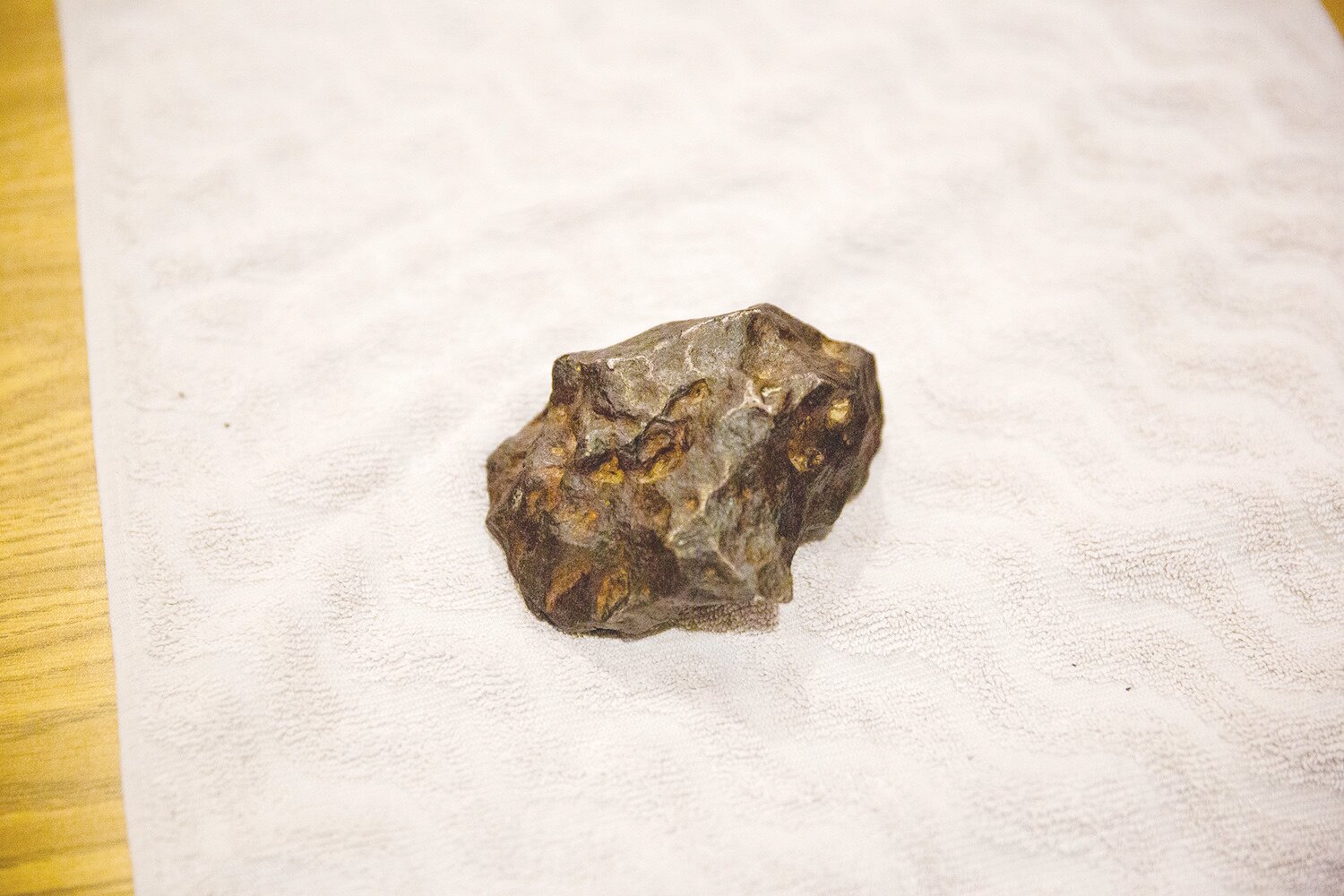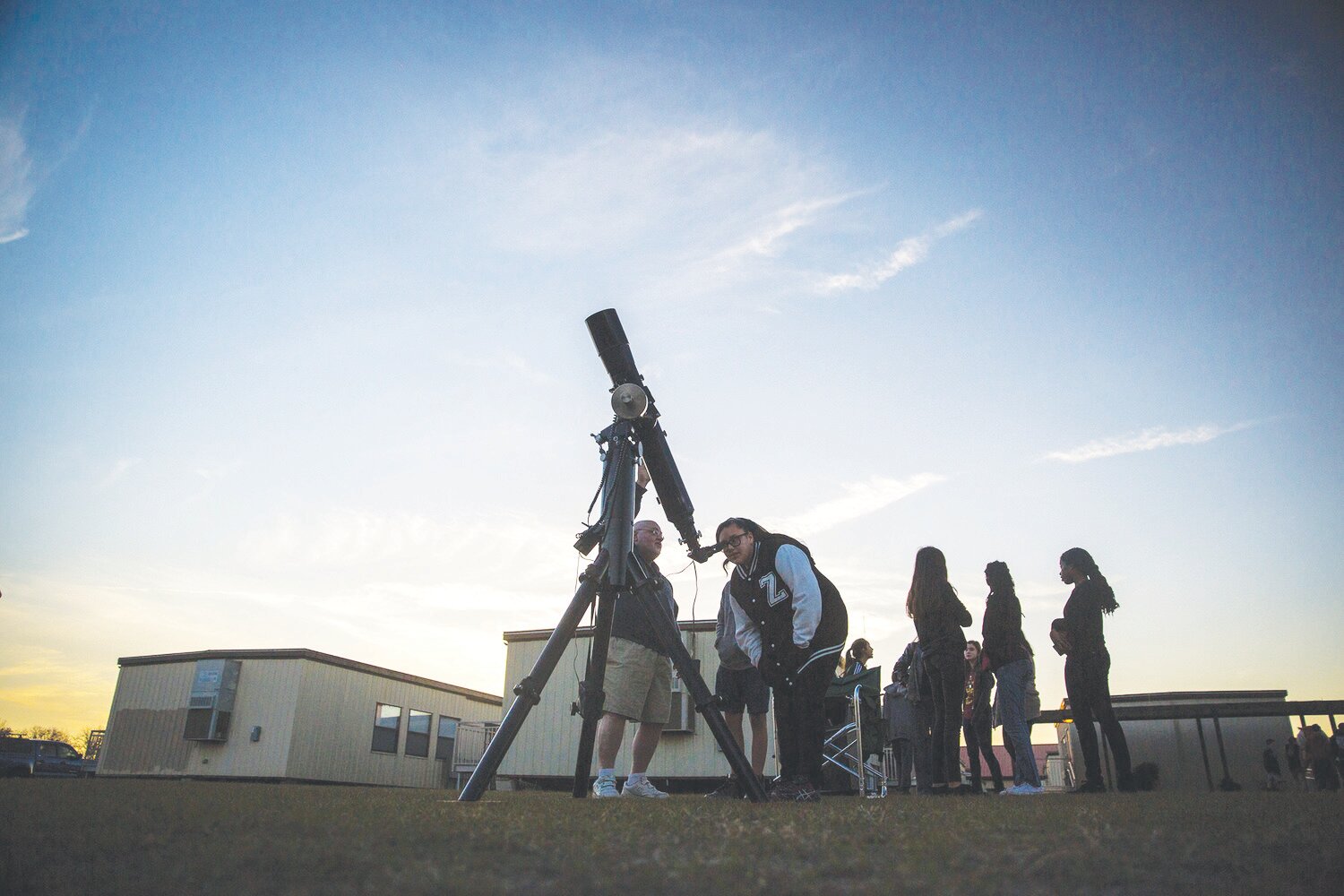Starlight Nights mix science, imagination at local schools
Organization teaches children to look up to expand their knowledge
CLAY COUNTY – Florida may truly be the “Sunshine State,” but an upcoming astronomical event will turn us into the “Un-Sunshine State” – at least for a few hours.
That sounds ominous. …
This item is available in full to subscribers.
Attention subscribers
To continue reading, you will need to either log in to your subscriber account, below, or purchase a new subscription.
Please log in to continueDon't have an ID?Print subscribersIf you're a print subscriber, but do not yet have an online account, click here to create one. Non-subscribersClick here to see your options for subscribing. Single day passYou also have the option of purchasing 24 hours of access, for $1.00. Click here to purchase a single day pass. |
Starlight Nights mix science, imagination at local schools
Organization teaches children to look up to expand their knowledge
CLAY COUNTY – Florida may truly be the “Sunshine State,” but an upcoming astronomical event will turn us into the “Un-Sunshine State” – at least for a few hours.
That sounds ominous. But panic not, for this is actually very exciting.
There will be an annular solar eclipse on Saturday, Oct. 14. While Northeast Florida may not be able to experience the entire event, we can witness a partial solar eclipse.
That is a lot of astronomy mumbo-jumbo. Let’s see if we can sort through it.
In a very general sense, the term eclipse simply means to block something. For example, when my wife, Desiree, feels I have not done my share around the house, she will step between me and the TV and tell me about it in great detail. She has eclipsed the TV from my point of view.
I am honor-bound to mention that I have a small TV.
In science, eclipse refers to obscuring a light source by another object. Here on Earth, we often hear of solar and lunar eclipses. Both are due to an elegant waltz among three celestial orbs.
Lunar eclipses occur during a Full Moon when the Sun, Earth and Moon are in a straight line. Here, the Moon passes through all or part of the Earth’s shadow in space, causing it to darken or appear coppery-red.
However, the Moon is in its new phase during a solar eclipse between the Sun and Earth. For a short period, the Moon will block the Sun from our terrestrial vantage point.
There are three different types of solar eclipses:
• Total. The disk of the Moon is able to block the Sun completely. These are rare and fantastic to experience.
• Partial. The Moon blocks only a portion of the Sun as if a “bite” has been taken out of it.
• Annular. Here, the apparent size of the Moon is slightly smaller and can only block the center of the Sun. What we observe is a spectacular bright ring called an annulus.
These different types of eclipses occur because neither the orbit of the Earth around the Sun nor the Moon around the Earth are exact circles. The distances are constantly changing, meaning so do the apparent sizes.
We’ve found students here in Clay County are amazed by facts like that, so we appear at district schools to enlighten them with a mix of science and entertainment.
You experience this in everyday life. For example, if you close one eye and place your thumb in front of the other eye, it seems as if you can completely hide a person standing ten feet away. The apparent size of your thumb is larger than an entire person because it is closer, even though the actual sizes are very different. This phenomenon is called the Size-Distance Illusion.
The span between the Earth and the Moon changes by 12%, while that between the Earth and the Sun differs by only 3%. So, the Moon undergoes more of an apparent change than the Sun.
The Moon reached its farthest point in its orbit, its apogee, on Oct. 9, meaning it appears a bit smaller. So, while the alignment is set for a solar eclipse on Saturday, as the New Moon comes between the Earth and the Sun, the Moon will only be able to cover the center of the Sun.
Such an alignment leads to a ring of fire in our daytime sky.
The Path of the Annularity, where this ring of fire can be seen, passes through North, South and Central America. Closer to home, it crosses the Western United States from Oregon to Texas.
But what about us here in Florida? While we may not be able to see the annular eclipse, we can experience a partial solar eclipse, with roughly 55% of the Sun being hidden by the Moon. Solar eclipses themselves are not that uncommon globally. They are infrequent for a given geographical area, making this a rare treat for Floridians.
Indeed, this is the second in a Solar Eclipse Triple Crown for the United States. The first was in 2017, and the third was a total solar eclipse in 2018. It will then not be until 2044 that the contiguous United States will again be an audience to such an event.
It is important to remember that looking at the Sun under any circumstances, even during an eclipse, is dangerous and harmful to your eyes. Always protect your eyes as you do your skin while in the Sun. Ordinary sunglasses are not safe enough. A safe way to view the eclipse is by using a special solar filter, such as those in eclipse glasses or handheld solar viewers.
I encourage everyone to take part in this remarkable celestial display. It offers an opportunity to be in awe of the universe and our place in space while providing a unique learning window – not one described in a textbook or simulated on a screen, but one happening right before us.
Keep looking up.










